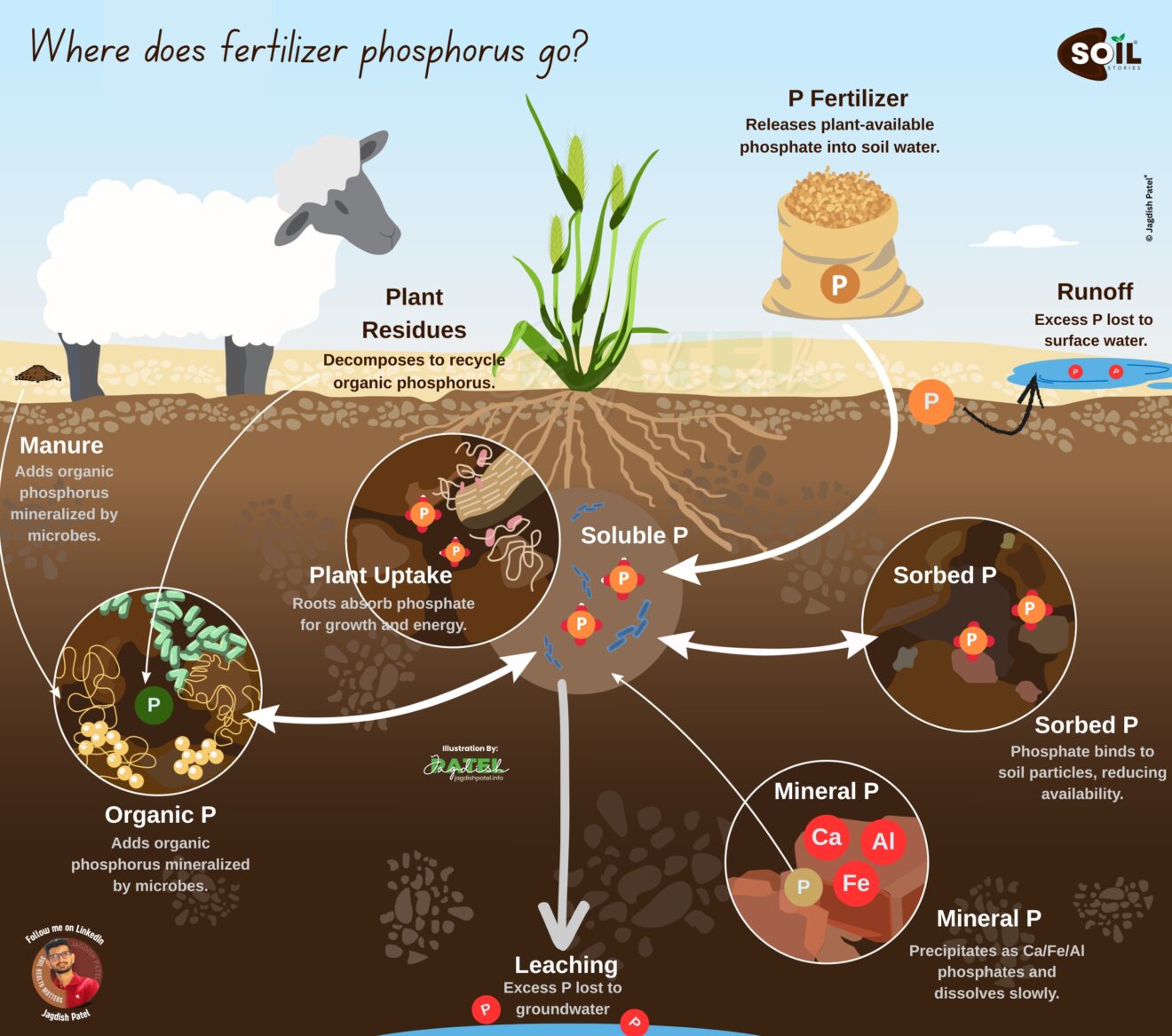Soil, the bedrock of our agricultural systems and ecosystems, faces a growing menace: acidification. This progressive decline in soil pH can severely impact plant growth, nutrients availability, and overall soil health. Let’s explore the causes and repercussions of soil acidification, utilizing insights from the provided infographic.

Comprehending Soil pH
Soil pH quantifies its acidity or alkalinity, spanning from 0 (extremely acidic) to 14 (highly alkaline). Most plants flourish in slightly acidic to neutral soils (pH 6-7), where vital nutrients are readily accessible. However, when the pH dips below this ideal range, a series of complications can emerge.
Factors Contributing to Soil Acidification
Both anthropogenic activities and natural processes can contribute to soil acidification.
- Human-Induced Factors:
- Excessive Application of Nitrogenous Fertilizers: Overuse of nitrogen-based fertilizers, particularly those containing ammonium, can introduce hydrogen ions into the soil, decreasing its pH.
- Acid Precipitation: Industrial emissions and fossil fuel combustion release sulfur dioxide and nitrogen oxides into the atmosphere, which react with water to form acid rain. This acid rain can further acidify soils.
- Industrial Emissions: Pollutants from industrial processes can also contribute to soil acidification.
- Mining Activities: Mining operations can expose sulfide minerals, which oxidize and generate sulfuric acid, leading to significant soil acidification.
- Legume Monocropping: Continuous cultivation of legumes can elevate nitrogen levels in the soil, potentially contributing to acidification.
- Removal of Biomass and Nutrient Depletion: Harvesting crops and removing plant material without replenishing nutrients can result in nutrient imbalances and soil acidification.
- Excessive extraction of exchangeable bases (Ca, Mg, and K): The removal of these essential cations through intensive cropping can render the soil more susceptible to acidification.
- Natural Factors:
- Elevated Precipitation and Oxidative Weathering: High rainfall and weathering processes can leach basic cations from the soil, leaving behind acidic residues.
- Volcanic Activity: Eruptions can release sulfur dioxide and other acidic compounds, contributing to soil acidification in affected areas.
- Decomposition of Organic Matter: The breakdown of organic matter releases organic acids, which can lower soil pH.
Ramifications of Soil Acidification
Soil acidification triggers a chain of adverse effects:
- Soil pH Reduction: The most direct consequence is a decrease in soil pH, making it less hospitable to many plant species.
- Metal Toxicity and Nutrient Imbalance: Acidic soils can increase the solubility of toxic metals like aluminum, which can damage plant roots and disrupt nutrient uptake. Furthermore, the availability of essential nutrients like phosphorus and calcium diminishes in acidic conditions.
- Plant Growth Inhibition: Nutrient deficiencies and metal toxicity can stunt plant growth, reduce yields, and impair overall plant health.
- Reduced Microbial Activity: Soil microorganisms play a vital role in nutrient cycling and decomposition. Acidic conditions can inhibit their activity, further disrupting soil processes.
- Nitrate Leaching and Groundwater Contamination: Acidic soils are more prone to nitrate leaching, where excess nitrates migrate through the soil and contaminate groundwater, posing risks to human health and aquatic ecosystems.
- Aluminum Toxicity: As previously mentioned, acidic soils can release aluminum ions, which can damage plant roots and interfere with nutrient uptake.
Mitigating Soil Acidification
Addressing soil acidification necessitates a multi-pronged approach:
- Liming: Applying lime (calcium carbonate) is the primary method to raise soil pH and neutralize acidity.
- Sustainable Fertilization Practices: Judicious fertilizer application and opting for slow-release or organic options can help minimize nutrient imbalances and acidification.
- Crop Rotation and Cover Cropping: Diversifying cropping systems and incorporating cover crops can enhance soil health and nutrient cycling, reducing the risk of acidification.
- Reducing Emissions: Curbing industrial emissions and promoting cleaner energy sources can help mitigate acid precipitation and its impact on soils.
Soil acidification is a complex issue; however, by comprehending its causes and consequences, we can implement proactive measures to safeguard our soils and ensure a sustainable future for agriculture and the environment.




